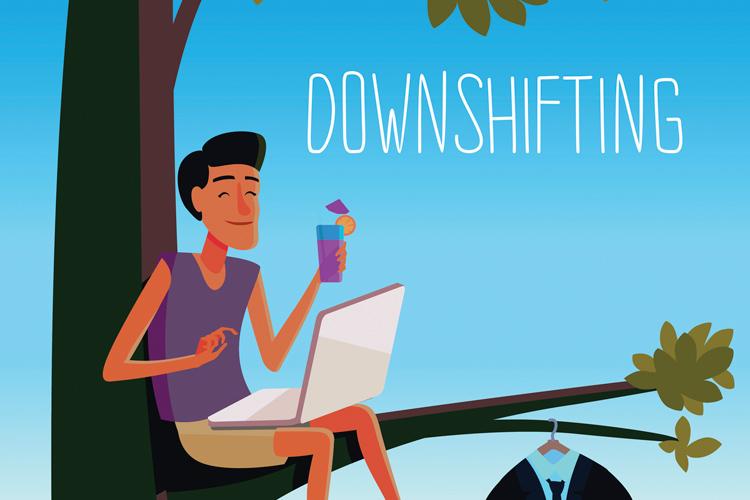Downshifting means reducing your hours, slowing down your pace of life, the pursuit of more simple living and achieving a better work/life balance.
Just a small step back from the rat race can have a powerful impact on your mental and physical health, relationships and attitude to work.
Reasons for wanting to downshift
- Spending more time with loved ones, enjoying hobbies or volunteering for charity.
- Reducing stress.
- Going down a gear before fully retiring.
- A lean towards the green - reducing your carbon emission by cutting down on your commute or time spent sitting at a computer.
- Less hours working may make you view your job more positively.
How to downshift
1. Assess your finances
Calculate your monthly outgoings and whether you would be able to cover them on a lower salary.
2. Set your objective
You may ideally want to go from five days a week to three, yet your boss may want you in four days. Be prepared to negotiate and remember that downshifting is often a gradual process.
3. Talk to your boss
Be honest about your desire to achieve a better work/life balance yet remain positive about your job. You are not resigning, just cutting back your hours, or seeking to reduce stress and achieve a more balanced work life.
Consider transferring your experience and skills to a different role within your company that requires fewer hours and a lower salary.
Should your boss refuse your request to downshift, contact your trade union who may be able to advise you on your options.
Case study one
Jim, who works in Facilities Management, reduced his working week to three days:
It was always my dream to paint for a living, yet I’ve always worked a “regular” job to pay the bills. In my late 30s, I gained confidence in my art after selling a few paintings, so started to spend all my spare time painting. I was effectively working two jobs and was exhausted.
I soon realised I would have to cut my hours down. It was a huge gamble, as I would be losing a large percentage of my wage and there was no guarantee I’d sell any more paintings.
Giving up two days of paid work is a difficult decision, especially when it is for something as personal as art. You need to have dedication, self-belief and be willing to put in a lot of hard work. Ultimately, it is about the pursuit of a more happy and fulfilled life.
Case study two
Graham, a father of two, writes for a national magazine:
I was offered a promotion at work, so used this as leverage to negotiate a drop in hours in lieu of a pay rise. I knew I could manage my workload over the equivalent of a four-day week. I also knew that with some careful budgeting we could just about manage on my existing salary, and an increase in family time meant more to me than the extra money.
Downshifting has definitely changed my life for the better — even more so than I expected. But if you do get the chance to reduce your hours, make sure you’ve worked out your budget carefully and that you’ll still be able do your job to the same standard without putting yourself under undue stress.
For more information on downshifting, visit the website of the International Downshifting Week awareness campaign at International Downshifting Week.
Prospect has also developed a number of free podcasts on 'Personal transition' and 'Looking after your own work stress'.



